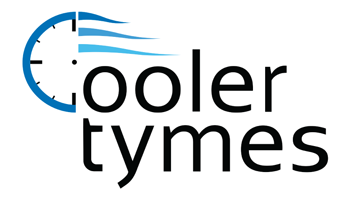It’s always nice when we manage to save money on our utility bills, but you should know there’s a way to do it when you aren’t even home.
The secret is your thermostat. By using automatic schedules, you can structure its daily schedule around your personal preferences. That means you can have different temperature settings for when you’re at home, away or even when you’re asleep.
By trying a few of these schedules, you’ll be able to enjoy comfortable temperatures while keeping more money in your pocket. Take a look at a few ways your thermostat can save you money in the summer:
While at Home
Pretty much whenever you’re home, you want a nice range of pleasant temperatures. That’s why it’s best to set your thermostat lower in the summer while inside to appreciate the cool air.
But the most energy-efficient temperatures for when you’re in your home during the summer is usually between 78 and 80 degrees Fahrenheit. By adjusting things a few degrees, you’ll avoid the worst of summer while keeping your energy bill more manageable.
While Away
If you’re setting the temperature for whenever you’re gone, it’s advantageous to set the thermostat higher than you would if you were in the house.
If your home is in a shady spot in a cooler climate, you can set the temperature as high as 88 degrees while no one is home and then lower it back to the sweet spot of 78-80 degrees when you or a family member return. This way, your air conditioning unit won’t be working overtime to provide cooling for a bunch of empty rooms.
While Sleeping
For a full night’s rest during summer weather, you want a temperature that’s nice and cool. A great place to start is between 68-72 degrees Fahrenheit. There’s less risk of getting too hot or too cold at some point overnight.
Other Ways to Use Less Energy:
- Put in a smart thermostat: Trying a smart thermostat in the summer helps save money on energy costs as it forms temperature schedules according to your lifestyle and home environment. They can lower the temperature while you are home or sleeping, while allowing it to get warmer when no one is home. With reliable brands like the Lennox iComfort, you are able to adjust settings and schedules through your smartphone, tablet or laptop. Requesting smart thermostat installation in your Litchfield Park home is an effortless way to set the correct temperature even when you aren’t home.
- Upgrade your HVAC system: A new HVAC system saves money right from the start. By investing in a more energy-efficient system, lower utility bills won’t be far behind since it requires less energy to achieve comfortable temperatures. Air conditioning installation in Litchfield Park is only a phone call away, so don’t hesitate to reach out to local pros like Cooler Tymes LLC who can set you up for success.
- Stay on top of routine AC maintenance: Hiring a skilled professional to perform regular air conditioning maintenance in Litchfield Park can have a significant impact on your utility bills. If you stay on top of cleaning key components like the coils, checking for damage and clearing ventilation of dust and debris, this can help your HVAC system run more efficiently. More efficient operation reduces strain on the unit and lowers operational costs, resulting in lower energy usage and subsequently, smaller bills.
- Clean or replace the air filter on a regular basis: Regularly changing the air filters in your HVAC system saves money by helping air flow efficiently through your air conditioner. When filters are clogged with dirt and debris, an AC unit has to work harder, and this greater strain could shorten the system’s life span and result in breakdowns.
- Verify your attic has enough insulation: Insulation is a crucial component for any energy-efficient home, keeping the hot air outside and the cool air inside during the summer. The North American Insulation Manufacturers Association (NAIMA) suggests that homeowners living in southern climates should possess at least 13-14 inches of insulation, while colder climates do better with 16-18 inches.
- Review your ventilation: A leak in the air ducts could increase your energy bills much more than 20 percent, plus it can potentially allow harmful emissions from your water heater, clothes dryer and other appliances to get into the atmosphere of your home. Watching for signs of leaks and sealing them can help with both these issues.
- Seal all other leaky spots in your home: Sealing leaky spots in your home with caulk, foam sealant or weather-stripping helps keep things cooler during those hot summer days. You should also check for any gaps around windows, doors and even outdoor fixtures. Taking the time to seal up any leaks now can help you save a lot over time.
